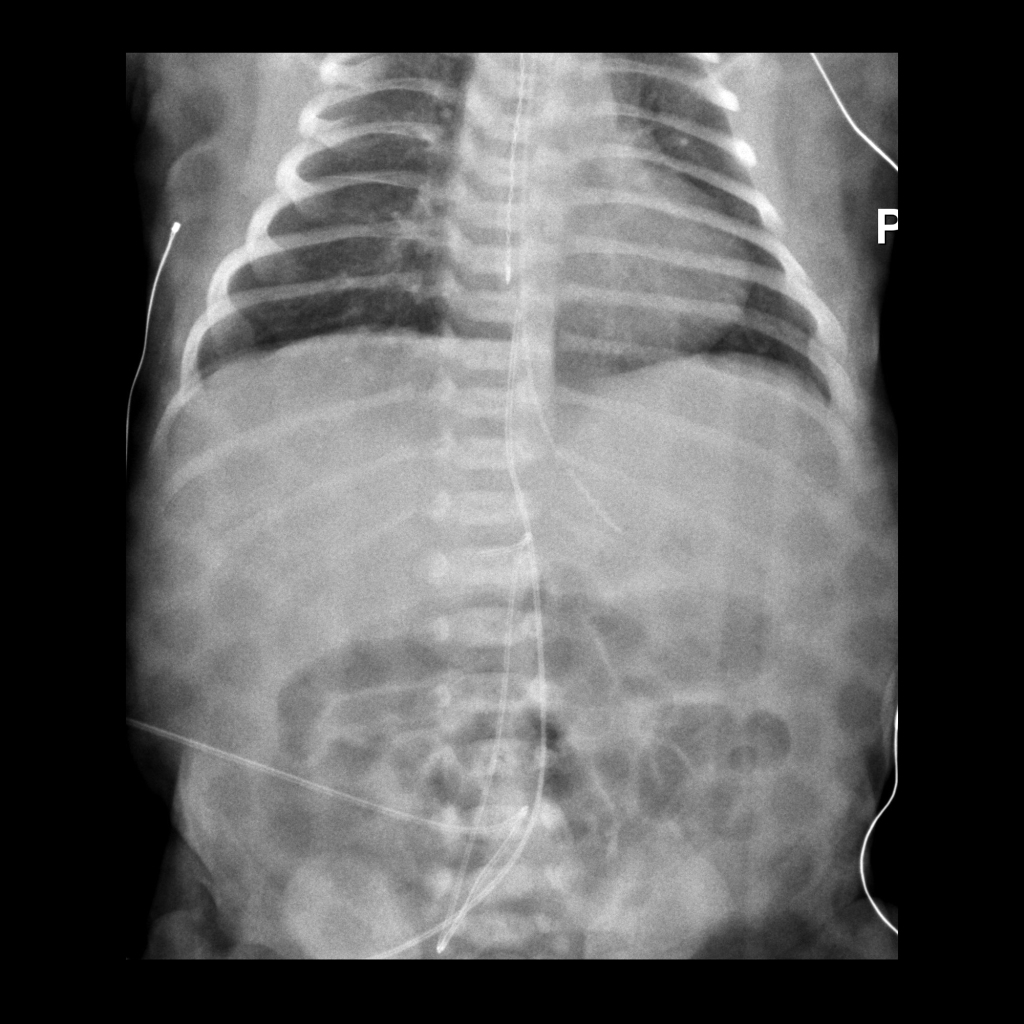- Etiology: placed in premature newborns and term newborns who need central arterial access for blood pressure monitoring + blood gas
- Imaging: normal umbilical artery catheter (UAC) course is umbilical artery to internal iliac artery to common illiac artery to aorta (in and caudad and then cephalad on an AP image) while coursing anterior to the spine on the lateral image, catheter tip should be at T6-T9 vertebral body above celiac artery / superior mesenteric artery / renal arteries (high UAC) or at L3-L5 vertebral body below the inferior mesenteric artery (low UAC), usually projects over left side of spine on AP view
- Complications: catheter tip positioned above T6 is near origin of great vessels from aortic arch or catheter tip positioned between T9-L2 is near origins of renal arteries and mesenteric vasculature, catheter tip is too low in position, catheter tip thrombosis which can extend into any adjacent arterial vessel and lead to renal infarct / renal artery stenosis / renovascular hypertension / necrotizing enterocolitis / lower extremity ischemia, spinal cord infarction (due to artery of Adamkiewicz) / pulmonary embolus if catheter is placed across a patent ductus arteriosus, perforation of vessel during catheter placement should be suspected when the umbilical arterial catheter projects over no known arterial vessel
- Treatment: repositioning or removal of malpositioned catheter
Radiology Cases of Umbilical Arterial Catheter Malfunction / Malposition / Misposition / Misplacement
Radiology Cases of Umbilical Arterial Catheter Tip in Appropriate Position

Radiology Cases of Umbilical Arterial Catheter Tip Positioned Above T6






Radiology Cases of Umbilical Arterial Catheter Tip Between T9-L2


Radiology Cases of Umbilical Arterial Catheter Tip Below L3


Radiology Cases of Umbilical Arterial Catheter Perforation of Vessel

Radiology Cases of Umbilical Arterial Catheter Tip Thrombus


